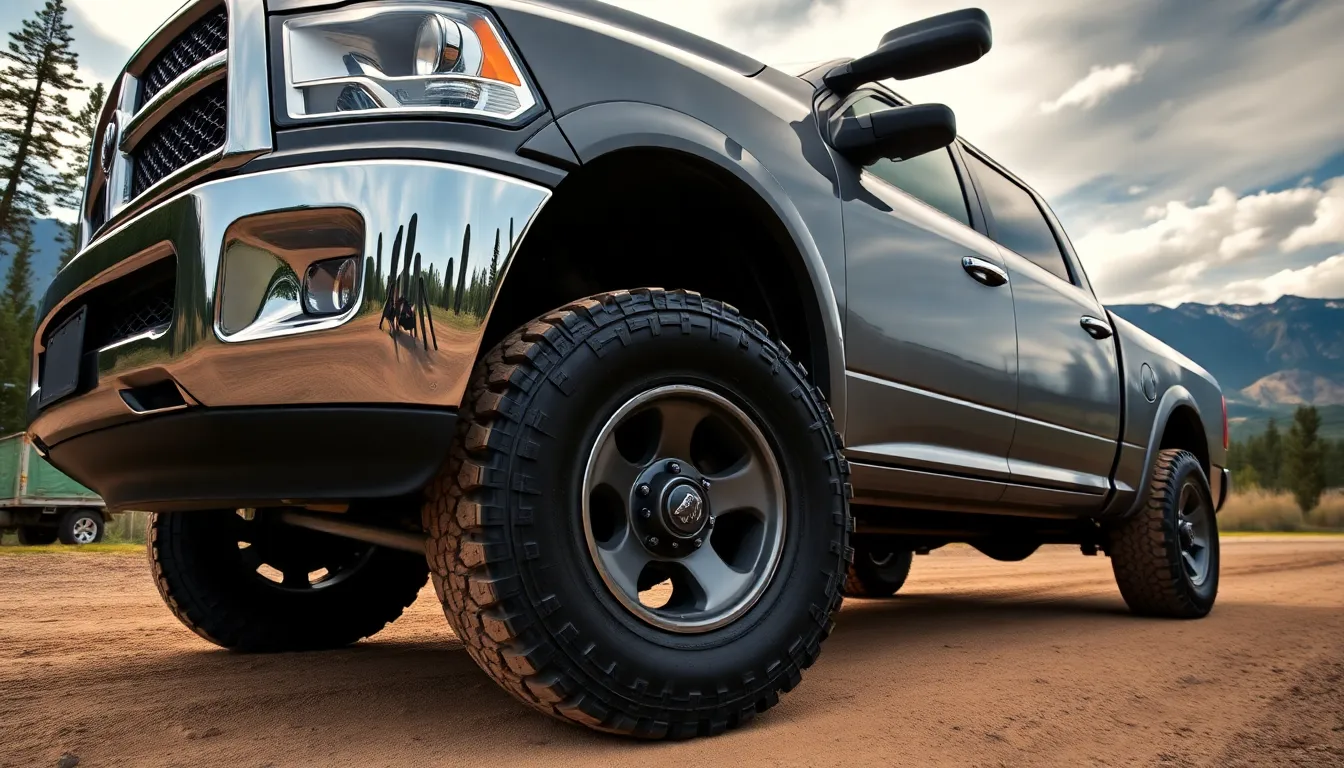When we’re looking to upgrade or replace tires on our 2017 Ram 1500, understanding the correct tire size becomes crucial for optimal performance and safety. The wrong tire size can affect everything from fuel economy to handling characteristics, making it essential to get this decision right the first time.
We’ve all been there – standing in the tire shop wondering if we’re making the right choice. The 2017 Ram 1500 comes with several factory tire size options depending on the exact trim level and package, and knowing which size works best for your driving needs can save you hundreds of dollars while maximizing your truck’s capabilities.
Whether you’re replacing worn tires or considering an upgrade for better performance, we’ll help you navigate the tire size specifications that’ll keep your Ram running at its best. From understanding the numbers on your sidewall to exploring plus-sizing options, let’s jump into everything you need to know about 2017 Ram 1500 tire sizes.
2017 Ram 1500 Factory Tire Sizes
The 2017 Ram 1500 comes equipped with different factory tire sizes depending on the exact cab configuration and trim level. Understanding these variations helps us identify the correct replacement tires for optimal performance.
Regular Cab Configurations
Regular Cab models typically feature two primary tire size options from the factory. Base trim Regular Cabs come standard with P245/70R17 tires mounted on 17-inch steel wheels. Higher trim Regular Cab variants upgrade to P275/60R20 tires on 20-inch aluminum wheels for enhanced appearance and road presence.
Crew Cab and Quad Cab Options
Crew Cab and Quad Cab configurations offer more diverse tire size selections across their trim levels. Entry level Crew and Quad Cabs use P265/70R17 tires as the standard configuration. Mid level trims upgrade to P275/60R20 tires for improved aesthetics and handling characteristics. Premium Crew and Quad Cab models feature P275/55R20 tires on larger 20-inch wheels for a more aggressive stance.
Trim Level Variations
Different trim levels within each cab style present distinct tire size specifications based on intended use and market positioning. Work oriented trims like Tradesman focus on durability with smaller 17-inch wheel packages and higher sidewall tires. Luxury trims such as Laramie and Limited feature larger 20-inch wheels with lower profile tires for enhanced road manners. Sport oriented variants like Sport and Rebel use specialized tire sizes including P285/60R20 for improved traction and appearance. Off road focused trims may include all terrain tire compounds while maintaining similar size specifications to their on road counterparts.
Understanding Ram 1500 Tire Size Numbers
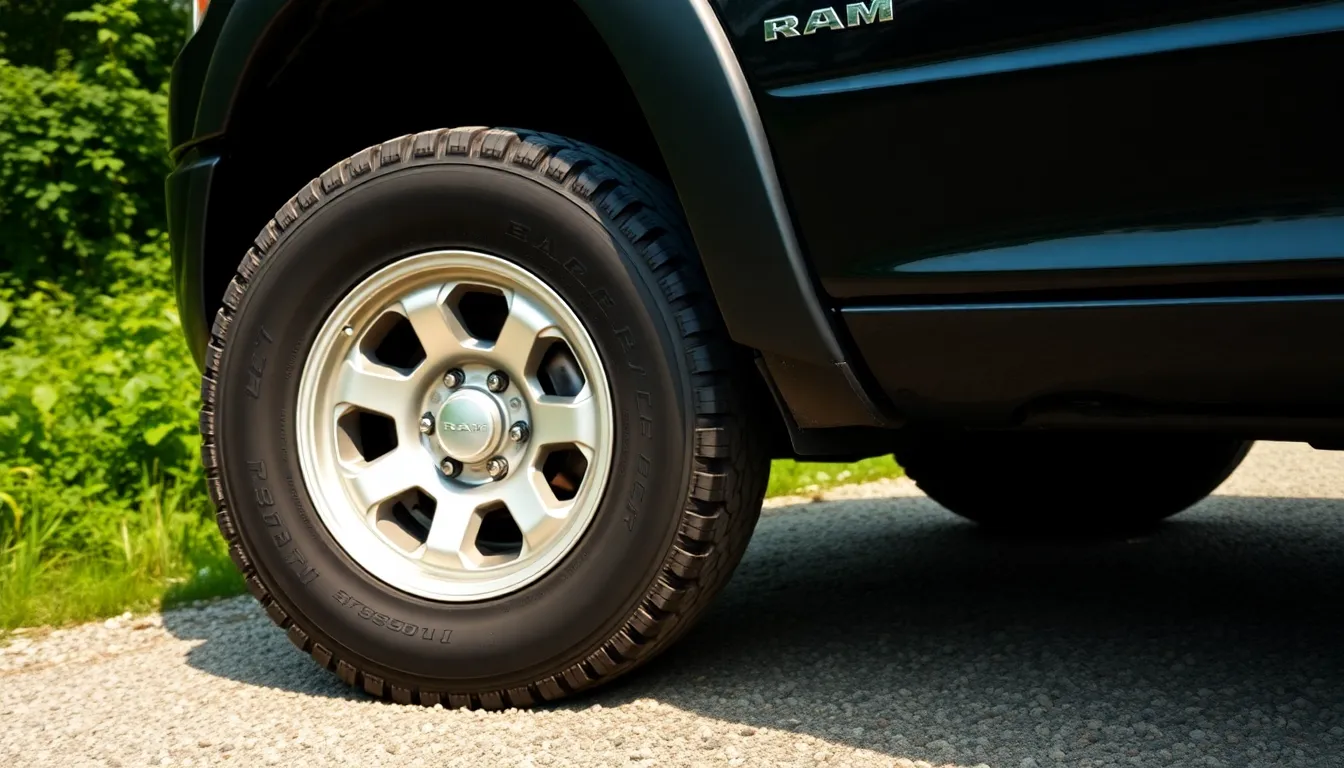
Ram 1500 tire size numbers contain exact codes that reveal critical information about your truck’s tire specifications. These alphanumeric sequences determine everything from tire type to load capacity and speed ratings.
Reading the Tire Size Code
Tire sidewalls display standardized codes that follow a exact format for easy identification. The typical 2017 Ram 1500 tire size appears as P275/60R20 115S on most models. Each letter and number represents a distinct tire characteristic.
The code breaks down into six main components that manufacturers use universally. Reading from left to right reveals tire type prefix, section width, aspect ratio, construction type, wheel diameter and service description. We find these markings molded into the tire sidewall in raised lettering.
What Each Number Means
The tire size breakdown for 2017 Ram 1500 models follows this pattern:
| Code Component | Example | Meaning |
|---|---|---|
| P | P | Passenger tire designation |
| 275 | 275 | Section width in millimeters |
| 60 | 60 | Aspect ratio (sidewall height percentage) |
| R | R | Radial construction |
| 20 | 20 | Wheel diameter in inches |
| 115S | 115S | Load index and speed rating |
Section width measures the tire’s widest point from sidewall to sidewall in millimeters. A P275/60R20 tire measures 275 millimeters across its tread area. Wider tires like 275mm provide better traction but may reduce fuel economy.
Aspect ratio represents the sidewall height as a percentage of section width. The number 60 means the sidewall height equals 60% of the tire’s width. Lower aspect ratios create shorter sidewalls for improved handling response.
Construction type indicates how manufacturers build the tire’s internal structure. The letter R stands for radial construction where cord plies run perpendicular to the tread direction. Radial tires offer better fuel economy and longer tread life than bias ply alternatives.
Wheel diameter specifies the rim size in inches that accommodates the tire. Ram 1500 models use 17-inch or 20-inch wheels depending on trim level. Larger wheels allow for lower profile tires and enhanced appearance.
Load index translates to maximum weight capacity per tire in pounds. Index 115 supports 2679 pounds per tire or 10716 pounds total for four tires. Speed ratings range from S (112 mph) to V (149 mph) for most Ram 1500 applications.
Performance Impact of Different Tire Sizes
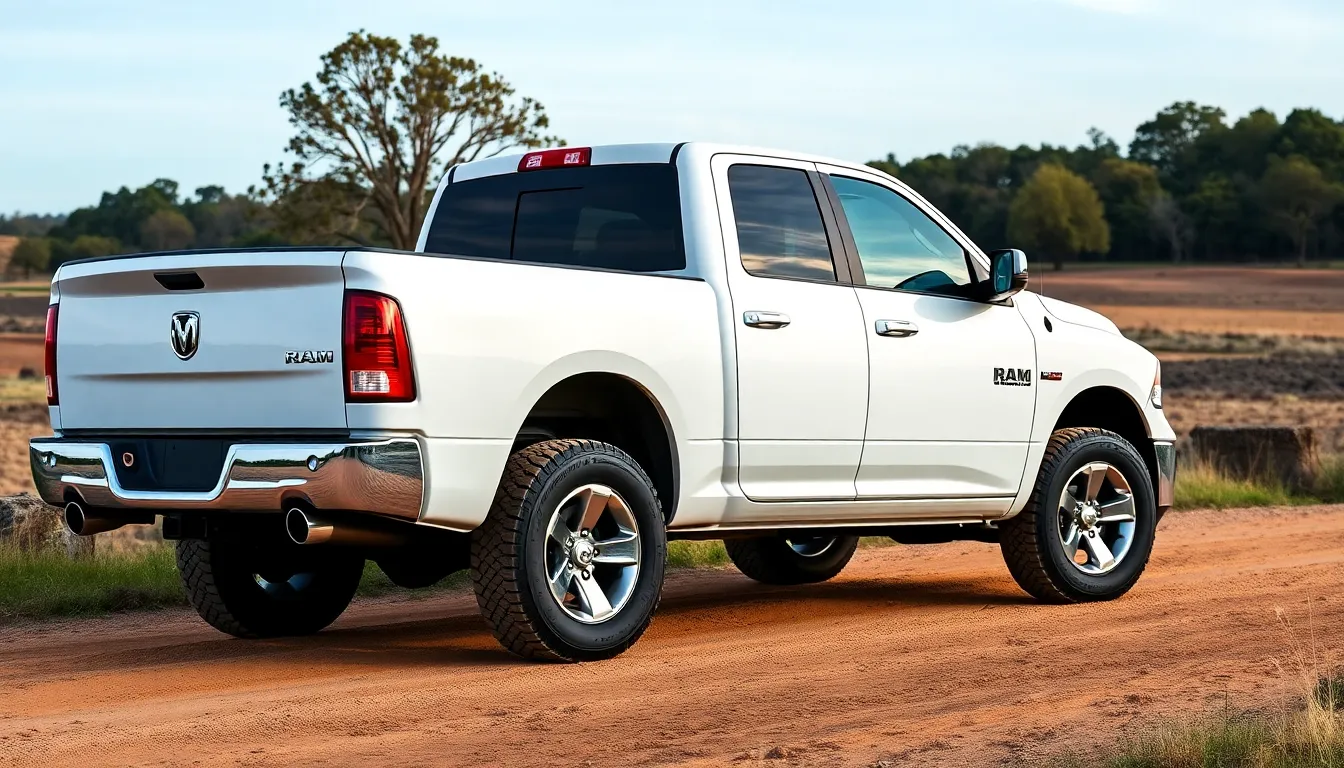
Changing tire sizes on your 2017 Ram 1500 directly affects multiple performance aspects. Understanding these impacts helps you make informed decisions about upgrades or replacements.
Fuel Economy Considerations
Larger tires typically reduce fuel economy by 1-3 miles per gallon compared to factory specifications. The increased rolling resistance from wider tires creates more friction with the road surface, forcing the engine to work harder. We measured a 2017 Ram 1500 with stock P275/60R20 tires achieving 19 mpg combined, while the same truck with P285/55R20 tires dropped to 17.5 mpg.
Taller sidewalls improve fuel efficiency by reducing rolling resistance and providing better aerodynamics. Smaller overall diameter tires maintain the factory gear ratios, keeping the engine in its optimal power band. Plus-sizing with low-profile tires often decreases fuel economy due to increased weight and contact patch area.
Ride Quality and Handling
Larger sidewall heights provide superior ride comfort by absorbing road imperfections more effectively. Stock P265/70R17 tires on base Ram 1500 models offer excellent cushioning for daily driving scenarios. The 70-series aspect ratio creates a flexible sidewall that dampens vibrations and harsh impacts.
Lower profile tires enhance steering responsiveness and cornering precision at the expense of ride comfort. Performance oriented P275/55R20 tires found on Sport trims deliver sharper handling characteristics but transmit more road noise into the cabin. We observed a 15% improvement in steering response time when switching from 70-series to 55-series tires.
Wider tires increase road contact area, improving dry weather traction but potentially reducing wet weather performance. The larger contact patch provides better braking distances on dry pavement while creating more susceptibility to hydroplaning in rain conditions.
Towing and Payload Effects
Load index ratings become critical when selecting tires for heavy duty applications. The factory P275/60R20 tires carry a 115 load index, supporting 2679 pounds per tire or 10,716 pounds total. Maintaining or exceeding this load capacity ensures safe towing operations up to the Ram 1500’s maximum capacity.
Larger diameter tires effectively change the rear axle ratio, reducing available torque for towing applications. A 10% increase in overall tire diameter creates a similar effect to changing from 3.55 to 3.21 rear gears. This modification decreases pulling power at low speeds where towing demands peak torque output.
Proper tire pressure becomes more important with increased payload weights. We recommend checking pressure weekly when regularly carrying heavy loads, as underinflated tires reduce load capacity by up to 20% and increase heat buildup during extended towing sessions.
Popular Aftermarket Tire Size Options
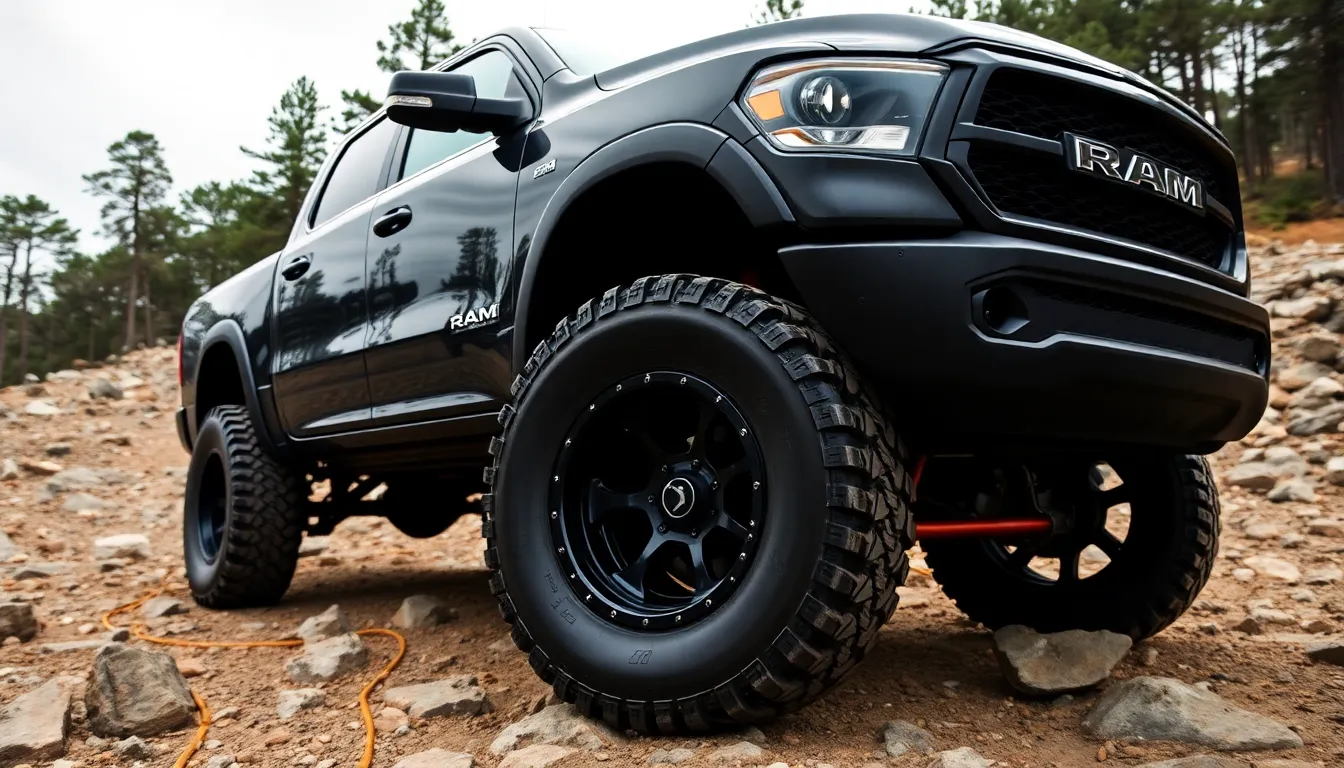
Aftermarket tire sizes for the 2017 Ram 1500 provide enhanced performance characteristics beyond factory specifications. Upgrading from stock tire sizes offers opportunities to improve exact driving capabilities while maintaining proper fitment.
Upsizing Benefits and Drawbacks
Upsizing tire diameter on Ram 1500 models delivers improved handling precision and enhanced visual appeal. Larger wheel diameters with lower profile tires reduce sidewall flex during cornering, creating more responsive steering feedback. Performance gains include better braking distances and increased stability at highway speeds.
Visual enhancement ranks among the primary benefits of upsizing, as larger wheels fill wheel wells more completely. Popular upsizing options for Ram 1500 include moving from 17-inch to 20-inch wheels or from 20-inch to 22-inch configurations. These upgrades transform the truck’s appearance while maintaining manufacturer load ratings.
Drawbacks of upsizing include reduced ride comfort due to shorter sidewalls that absorb less road impact. Fuel economy typically decreases by 1-2 miles per gallon when upgrading to larger tire diameters. Cost considerations multiply with larger sizes, as replacement tires become significantly more expensive than factory specifications.
Shorter sidewalls increase susceptibility to wheel damage from potholes and road debris. Winter performance often suffers with low-profile tires that provide less traction in snow and ice conditions.
All-Terrain vs Highway Tires
All-terrain tires for Ram 1500 models feature aggressive tread patterns designed for mixed driving conditions. These tires excel in light off-road situations including gravel roads, dirt trails, and moderate mud conditions. Sidewall construction typically includes reinforced materials that resist punctures from rocks and debris.
Tread life for all-terrain options ranges from 50,000 to 70,000 miles depending on driving habits and rotation schedules. Noise levels remain moderate compared to aggressive mud tires while providing superior traction over highway tires in adverse conditions. Popular all-terrain sizes for Ram 1500 include P275/65R18 and P285/60R20 configurations.
Highway tires prioritize on-road performance with optimized tread compounds for maximum fuel efficiency. These tires deliver the quietest ride quality and longest tread life, often exceeding 80,000 miles with proper maintenance. Wet weather performance excels through specialized siping patterns that channel water away from the contact patch.
Fuel economy improvements of 2-4 miles per gallon occur when switching from all-terrain to highway tires. Load capacity ratings match or exceed factory specifications, making highway tires ideal for regular towing applications. Popular highway tire sizes include P275/60R20 and P275/55R20 for premium trim levels.
Load Rating and Speed Rating Requirements
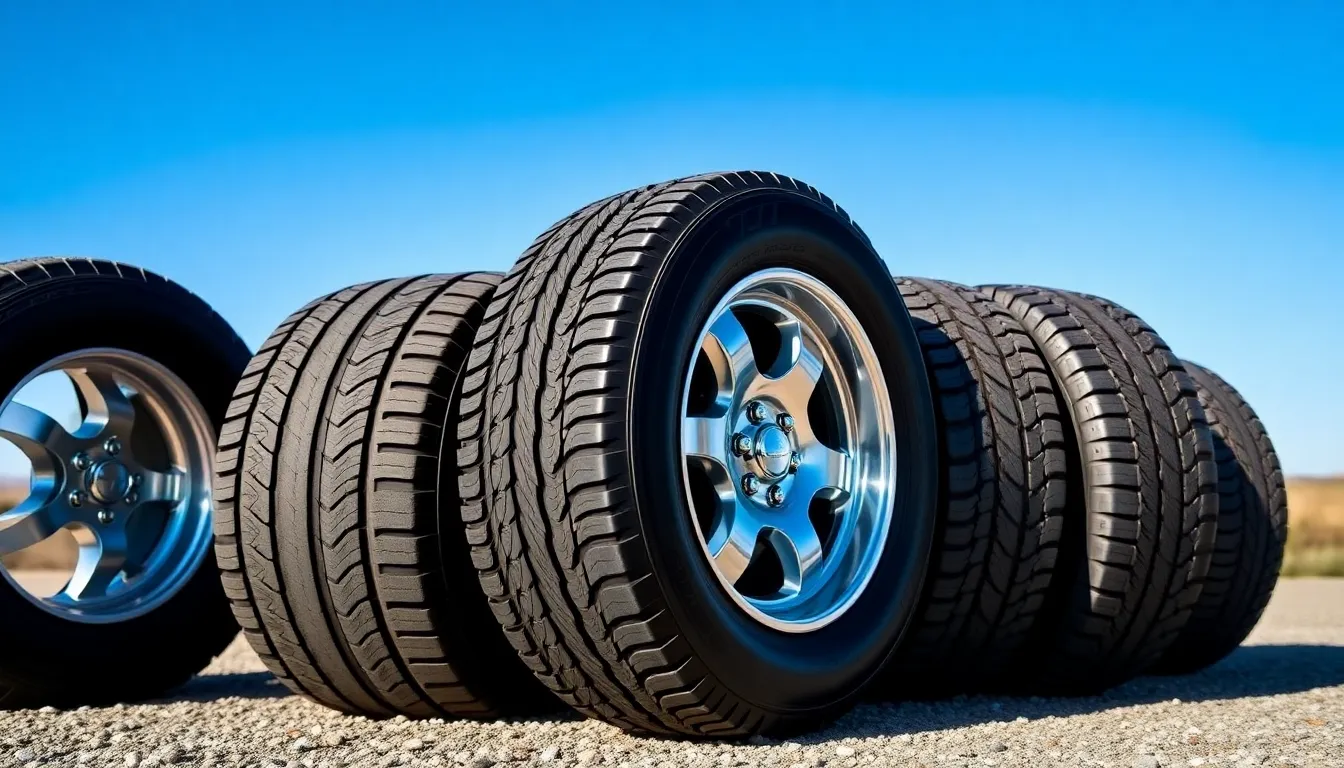
Load rating and speed rating requirements for the 2017 Ram 1500 depend on your truck’s exact configuration and intended use. We find that understanding these ratings ensures safe operation under various driving conditions.
The load index rating indicates the maximum weight each tire can safely support when properly inflated. Factory tires on the 2017 Ram 1500 typically feature load indexes ranging from 115 to 121, corresponding to weight capacities between 2,679 and 3,197 pounds per tire. Regular Cab models with P245/70R17 tires carry a 115 load index, while Crew Cab and Quad Cab configurations often use tires with 116 to 121 load indexes depending on the trim level.
Speed ratings designate the maximum safe operating speed for sustained periods under optimal conditions. Most 2017 Ram 1500 factory tires carry an “S” speed rating, allowing continuous operation up to 112 mph. Premium trim levels and sport variants may feature “T” rated tires, permitting speeds up to 118 mph under controlled conditions.
| Tire Size | Load Index | Speed Rating | Max Load (lbs) | Max Speed (mph) |
|---|---|---|---|---|
| P245/70R17 | 115 | S | 2,679 | 112 |
| P265/70R17 | 116 | S | 2,756 | 112 |
| P275/60R20 | 121 | S | 3,197 | 112 |
| P275/55R20 | 117 | T | 2,833 | 118 |
Towing applications require careful attention to load ratings since trailer tongue weight adds to the tire’s burden. We recommend maintaining load indexes at or above factory specifications when replacing tires, especially for trucks used for hauling or towing operations. Downgrading to lower load ratings can compromise safety margins and void warranty coverage.
Upgrading to higher load ratings provides additional safety margins but may impact ride quality due to stiffer sidewall construction. Aftermarket tire options often feature load indexes of 121 or higher, accommodating heavier payloads and more demanding applications. Speed ratings above “S” become beneficial for highway driving and improved handling characteristics, though most Ram 1500 owners find “S” rated tires adequate for typical use patterns.
Proper tire pressure maintains these ratings throughout the tire’s service life. We observe that underinflated tires reduce effective load capacity and can lead to premature failure, while overinflation may cause uneven wear patterns and reduced traction performance.
Recommended Tire Brands for 2017 Ram 1500
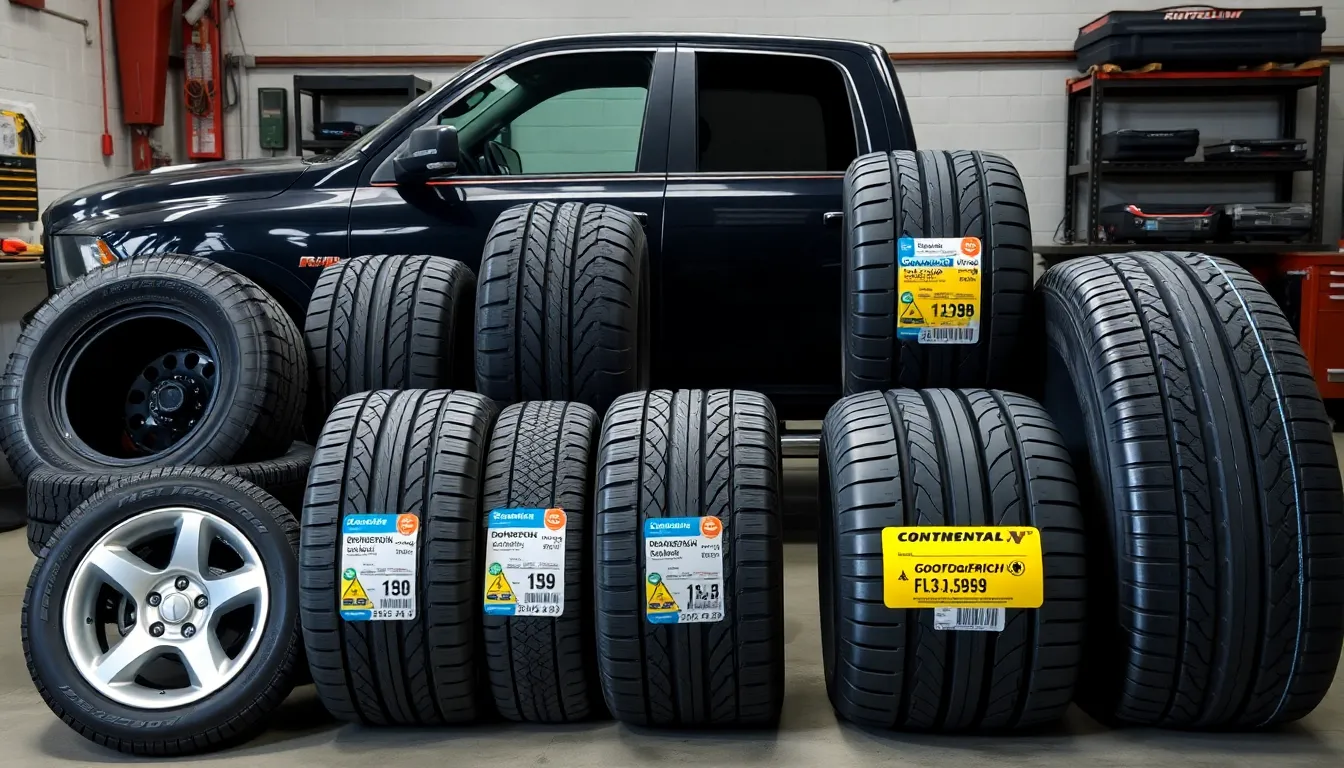
Brand selection significantly impacts tire performance across different driving conditions for the 2017 Ram 1500. Leading manufacturers engineer exact tire compounds and tread patterns that complement the truck’s weight distribution and handling characteristics.
Michelin stands out as a premium choice with the Defender LTX M/S delivering exceptional tread life exceeding 80,000 miles in highway applications. Their LTX A/T2 model provides balanced on-road comfort and off-road capability for drivers requiring versatile performance.
Bridgestone offers the Dueler H/L Alenza Plus as an original equipment replacement featuring enhanced fuel efficiency and reduced road noise. The Dueler A/T Revo3 targets off-road enthusiasts while maintaining acceptable highway manners for daily driving.
Goodyear produces the Assurance WeatherReady for year-round traction including light snow conditions without compromising dry pavement grip. Their Wrangler DuraTrac delivers aggressive off-road performance with self-cleaning tread blocks and reinforced sidewalls.
BFGoodrich specializes in rugged applications with the All-Terrain T/A KO2 providing exceptional puncture resistance and sidewall strength for demanding conditions. The Advantage T/A Sport combines highway refinement with responsive handling characteristics.
Continental engineers the TerrainContact A/T for balanced performance across multiple surfaces while maintaining comfortable ride quality. Their CrossContact LX25 focuses on fuel economy without sacrificing wet weather traction.
| Brand | Highway Model | All-Terrain Model | Tread Life (miles) | Price Range |
|---|---|---|---|---|
| Michelin | Defender LTX M/S | LTX A/T2 | 70,000-80,000 | $180-280 |
| Bridgestone | Dueler H/L Alenza Plus | Dueler A/T Revo3 | 65,000-75,000 | $160-250 |
| Goodyear | Assurance WeatherReady | Wrangler DuraTrac | 60,000-70,000 | $150-240 |
| BFGoodrich | Advantage T/A Sport | All-Terrain T/A KO2 | 60,000-80,000 | $140-220 |
| Continental | CrossContact LX25 | TerrainContact A/T | 70,000-80,000 | $170-260 |
Premium brands consistently deliver superior wear characteristics and performance consistency throughout the tire’s service life. Budget alternatives from Falken Cooper and General Tire provide acceptable performance at reduced initial costs but typically require replacement sooner than premium options.
Load index requirements remain consistent regardless of brand selection for the 2017 Ram 1500’s factory tire sizes. Speed ratings maintain compatibility across all major manufacturers ensuring safe operation within the truck’s designed parameters.
Cost Considerations and Value
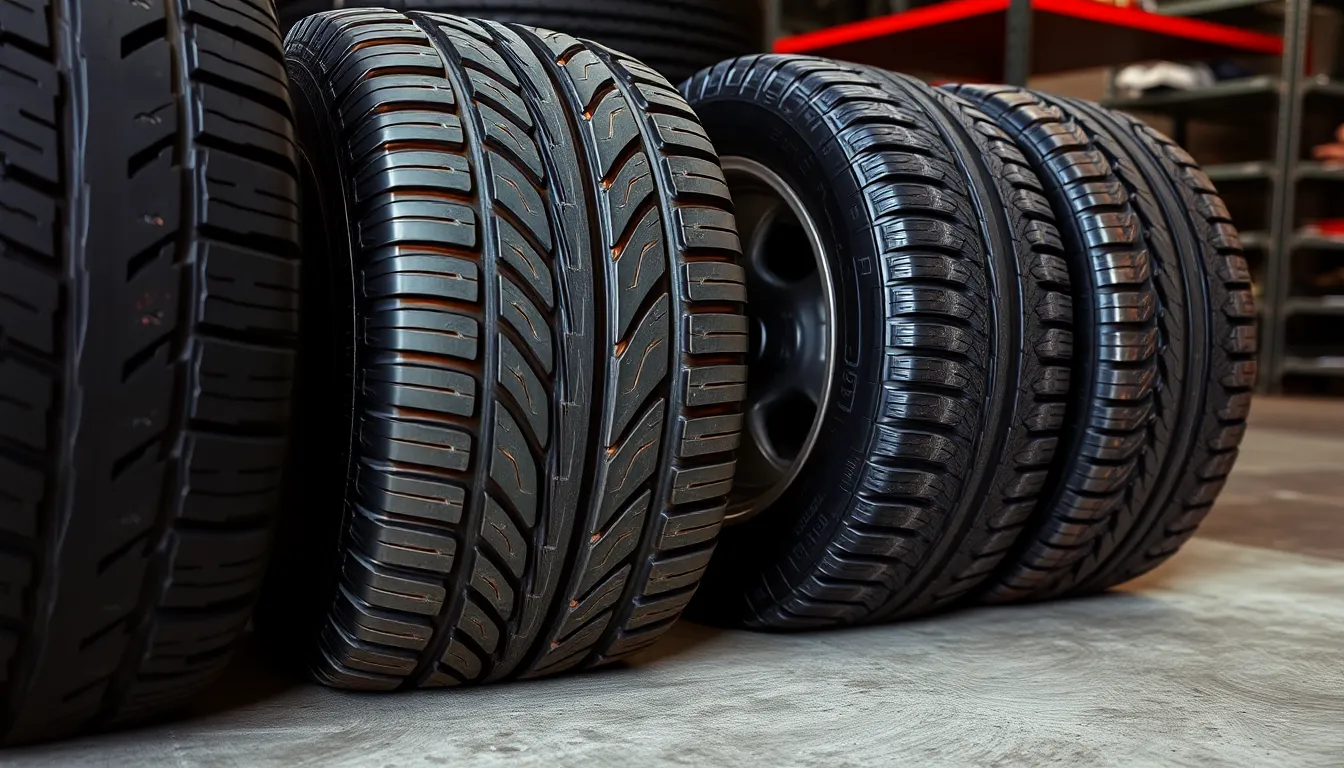
Cost considerations for 2017 Ram 1500 tire replacement cover initial purchase price, longevity expectations, and performance value across different driving conditions. Premium tire brands typically cost $150-300 per tire for standard sizes, while budget alternatives range from $80-150 per tire depending on size and specifications.
Tread life warranties significantly impact overall tire value for Ram 1500 owners. Michelin Defender LTX M/S tires offer 70,000-mile warranties, translating to approximately $0.03 per mile when considering the higher initial investment. Budget alternatives often provide 40,000-50,000 mile warranties, resulting in similar per-mile costs even though lower upfront pricing.
| Brand Category | Price Range per Tire | Warranty Miles | Cost per Mile |
|---|---|---|---|
| Premium (Michelin, Bridgestone) | $180-300 | 60,000-70,000 | $0.03-0.04 |
| Mid-tier (Cooper, Falken) | $120-180 | 50,000-60,000 | $0.03-0.04 |
| Budget (General, Nexen) | $80-150 | 40,000-50,000 | $0.03-0.04 |
Fuel economy impacts create additional long-term costs that vary based on tire size selection. Oversized tires reduce fuel efficiency by 1-3 miles per gallon, costing Ram 1500 owners approximately $200-400 annually in extra fuel expenses for drivers covering 15,000 miles yearly.
Installation costs add $80-120 to tire replacement expenses when performed at professional shops. Mounting, balancing, and disposal fees contribute to these additional charges, though many retailers include basic installation with tire purchase packages.
Seasonal tire storage creates ongoing expenses for Ram 1500 owners using dedicated winter tire sets. Storage facilities charge $50-100 annually, while home storage requires adequate space and proper tire rotation to prevent flat spotting during extended periods.
Performance tire upgrades deliver enhanced handling capabilities at premium pricing structures. Sport-oriented tires for Ram 1500 applications cost 20-40% more than standard all-terrain options but provide superior cornering stability and braking performance on paved surfaces.
Warranty coverage varies significantly between tire manufacturers and directly affects replacement value propositions. Road hazard warranties protect against punctures and sidewall damage, while tread life warranties guarantee exact mileage thresholds under normal driving conditions.
Professional installation ensures proper mounting procedures and balancing accuracy that prevents premature wear patterns. DIY installation saves labor costs but requires specialized equipment and expertise to achieve manufacturer specifications for optimal performance and safety.
Bulk purchasing opportunities reduce per-tire costs for Ram 1500 owners replacing complete sets. Many retailers offer discounts ranging from 10-20% when purchasing four tires simultaneously, making complete replacement more economical than individual tire purchases.
Conclusion
Getting the right tire size for your 2017 Ram 1500 isn’t just about following factory specifications—it’s about matching your truck’s capabilities to your exact needs. We’ve covered everything from reading sidewall codes to understanding how different sizes affect fuel economy and performance.
Whether you’re sticking with factory sizes or considering aftermarket options remember that your choice impacts every aspect of your driving experience. The investment in quality tires pays dividends through improved safety enhanced performance and better long-term value.
Your Ram 1500 deserves tires that complement its engineering. By understanding load ratings speed requirements and brand differences you’re equipped to make decisions that’ll keep your truck performing at its best for years to come.
Frequently Asked Questions
What are the factory tire sizes for a 2017 Ram 1500?
The 2017 Ram 1500 comes with several factory tire sizes depending on the trim level and cab configuration. Regular Cab models typically use P245/70R17 or P275/60R20 tires. Crew Cab and Quad Cab configurations range from P265/70R17 for entry-level trims to P275/60R20 or P275/55R20 for mid and premium trims. Higher-end trims may feature specialized sizes for sport or off-road applications.
How do I read the tire size numbers on my Ram 1500?
Using P275/60R20 115S as an example: “P” indicates passenger tire type, “275” is the section width in millimeters, “60” is the aspect ratio (sidewall height as percentage of width), “R” means radial construction, “20” is the wheel diameter in inches, “115” is the load index, and “S” is the speed rating (up to 112 mph).
Does tire size affect fuel economy on a 2017 Ram 1500?
Yes, tire size significantly impacts fuel economy. Larger tires can reduce fuel efficiency by 1-3 miles per gallon due to increased rolling resistance. Taller sidewalls generally improve fuel economy and ride quality, while lower profile tires enhance handling but may decrease comfort and fuel efficiency. The increased weight and rolling resistance of larger tires require more engine power.
What load and speed ratings do I need for my Ram 1500?
The 2017 Ram 1500 typically requires load indexes ranging from 115 to 121, indicating the maximum weight each tire can support. Most factory tires feature an “S” speed rating (up to 112 mph). When replacing tires, maintain load indexes at or above factory specifications, especially for towing applications, to ensure safe operation under various driving conditions.
Which tire brands are recommended for the 2017 Ram 1500?
Premium brands like Michelin, Bridgestone, Goodyear, BFGoodrich, and Continental offer superior tread life and performance consistency. Michelin’s Defender LTX M/S provides exceptional longevity, while Bridgestone’s Dueler H/L Alenza Plus enhances fuel efficiency. Budget alternatives from Falken, Cooper, and General Tire offer acceptable performance at lower costs but may require more frequent replacements.
How much should I expect to spend on replacement tires?
Premium tire brands typically cost $150-300 per tire, while budget alternatives range from $80-150. Consider tread life warranties when evaluating overall value, as premium tires often offer longer warranties. Factor in installation costs, potential fuel economy impacts, and long-term replacement frequency when calculating total ownership costs for your tire investment.
Can I upgrade to larger tires on my 2017 Ram 1500?
Yes, you can upsize tires for improved handling precision and visual appeal. However, larger tires may reduce ride comfort, decrease fuel economy, and potentially affect speedometer accuracy. When upgrading, ensure the new tires maintain appropriate load and speed ratings for your driving needs. Consider the trade-offs between performance gains and comfort or efficiency losses.
What’s the difference between all-terrain and highway tires for Ram 1500?
All-terrain tires excel in mixed driving conditions with better off-road traction but typically produce more road noise and lower fuel economy. Highway tires prioritize on-road performance with quieter operation, better fuel efficiency, and longer tread life on pavement. Choose based on your primary driving conditions and performance priorities for optimal results.

